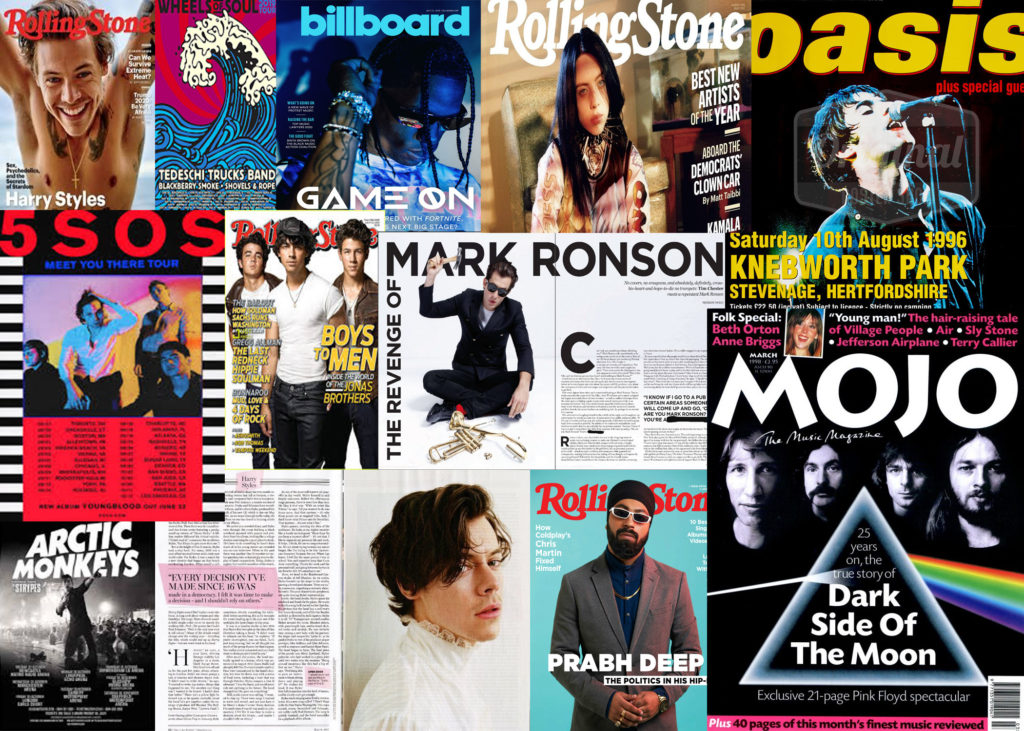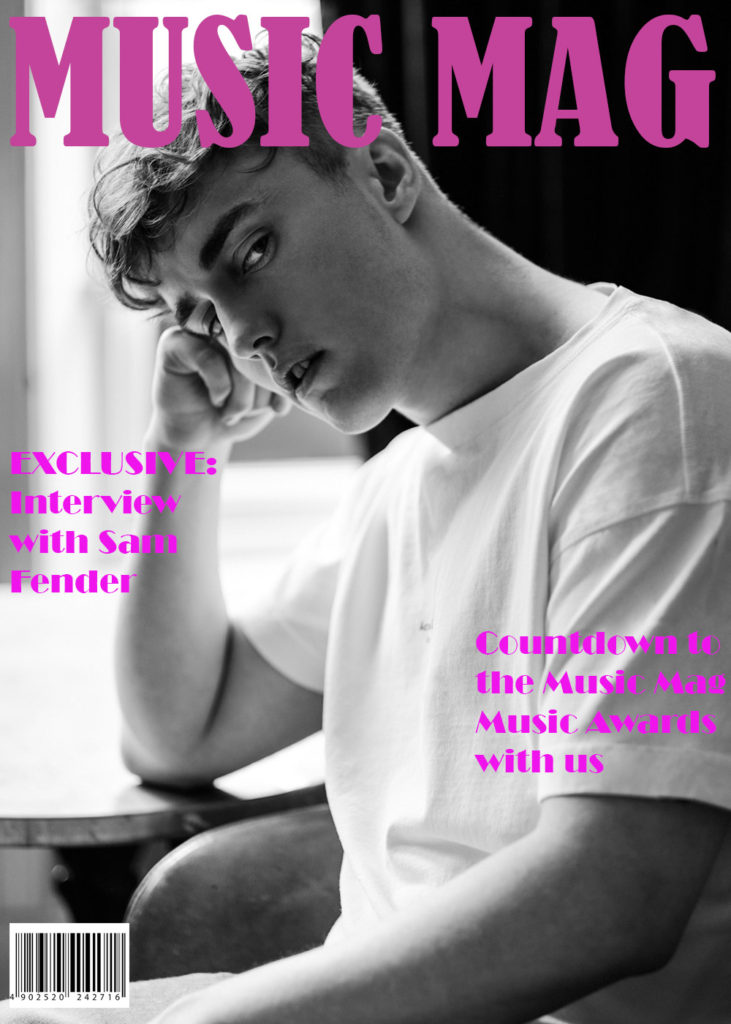| questions | the daily mail | the ‘i’ |
| When they were first introduced – ie do they have a tradition? | first issue released in 1896, traditionally a middle-market newspaper | October 2010, introduced as a sister paper to ‘the independent’ newspaper. doesn’t really have traditions as it is still a fairly new newspaper |
| Are they part of a bigger organisational structure? | part of the daily mail and general trust and published by DMG media | was bought by the daily mail and general trust in 2019 |
| Are they known for a particular political perspective? | known for being right-wing/ conservative supporters | known for being centrism/more liberal and attempt to be non-biased towards a specific political party |
| What kind of journalism do they produce? What is their USP? What stories do they specialise in? | the daily mail has be criticized for its lack of reliability and accusations of homophobic and racist news stories. | the ‘i’ is considered to be very highly regarded by journalists. stories they specialise in focus on social issues and inequality, their unique selling point is that they publish stories in the point of view of both left wing and right wing supporters |
| What kind of people run the paper? Produce the stories? | the current owner of the daily mail is a great grandson of one of the original founders of the newspaper and he is a viscount. the current editor is Geordie Greig. | |
| Do they have a similar readership reach? | the daily mail has a circulation of 1,134,184 and has a majority female readership with 52-55% of its readers being female | |
| Do they have a similar readership profile / target audience? | aimed at middle/upper class readers and right-wing political party supporters | |
| How are they currently doing? Increasing or decreasing sales and revenue? | ||
| How are they looking to embrace new media technologies? | ||
| Do they have a similar layout and design? | was originally a broadsheet but switched to a tabloid style newspaper in 1971 | tabloid styled newspaper |
All posts by Jessica M
Filters
Curran and seaton book quotes
James Curran
- the free market, it is also argued, makes the press a representative institution.
- the market based press is independent because it owes allegiance only to the public.
- perhaps the closest the press commissions came to following a social market strategy was to advocate special anti-monopoly measures for the press
- the press complains commission (PCC) was established in 1991
- the campaign for press and broadcasting freedom (CPBF), established in 1979, continued to be an eloquent exponent of reform.
Jean Seaton
- British broadcasting was started as a public service, and this proved as creative commercially as it was innovative culturally
three types of media ownership

csp 12 – newspapers
Jurgen Habermas – public sphere
Habermas defines communication as strictly what happens between two or more talking seriously about something that exists or should exist in the world, but no one disputes the validity of the statements or suggestions made by each other. Communication therefore uses a medium in and through which it occurs: the language. The public sphere is an area in social life where individuals can come together to freely discuss and identify societal problems, and through that discussion influence political action.
Noam chomsky – the 5 filters that manufacture consent
The five filters of manufacturing consent are:
- Structures of ownership
- The role of advertising
- Links with ‘The Establishment’
- Diversionary tactics – ‘flack’
- Uniting against a ‘common enemy’
Chomsky proposes that the mass communication media of the U.S. “are effective and powerful ideological institutions that carry out a system-supportive propaganda function, by reliance on market forces, internalized assumptions, and self-censorship, and without overt coercion”
Louis Althusser – interpellation & Ideological State Apparatus
Louis Althusser says that ‘all ideology hails or interpellates concrete individuals as concrete subjects, through the functioning of the category of the subject’. Althusser suggests that we as people are socially constructed. The way in which society addresses you is interpellation which is the way that your subject identity is formed.
Antonio Gramsci – the concept of hegemony / hegemonic struggle
Suggests that power relations can be understood as a hegemonic struggle through culture. Concept of Hegemony is to illustrate how certain cultural forms predominate over others, which means that certain ideas are more influential than others.
Hegemony is a struggle that emerges from NEGOTIATION and CONSENT – postcolonialism articulates a desire to reclaim, re-write and re-establish cultural identity and thus maintain power of The Empire.
James Curran & Jean Seaton – the theory of the liberal free press
-The idea that the media is controlled by a small number of companies primarily driven by the logic of profit and power
-The idea that media concentration generally limits or inhibits variety, creativity and quality
-The idea that more socially diverse patterns of ownership help to create the conditions for more varied and adventurous media productions
a2 production work music magazine
moodboard

tour poster

Magazine front cover

Double page spread

csp 11 – oh
Previously known as ‘oh comely’ – Oh is a women’s magazine covering food, recipes, film, fashion, music, art and culture.
key stats/facts
- Social Media Reach: 100,000
- Readers Per Issue: 25,000
- Average Age of reader: 27
- Sold through independents, WHSmith and international outlets
The Independent identified Oh Comely as part of a change in magazine publishing led by younger editors launching print titles for a generation of readers raised on digital media.
Ownership
Oh magazine is a bi-monthly (twice a month) British magazine published by Pirates Ahoy! a subsidiary of Iceberg Press, publisher of The Simple Things magazine.
Iceberg press brought oh comely from Adeline media in 2016.
Iceberg press
- only make two of their own magazines – oh and the simple things.
- they have a separate website (www.picsandink.com) to sell smaller independent magazines
- an independent publishing company
- founded in 2014 by three friends working for a bigger publishing company who quit to start up their own
representation
- focus’s more on women’s well-being rather than celebrity gossip and inspires creativity which makes it different and stand out compared to the typical women’s magazine
- published by younger publishers helps engage with younger target audiences audiences
postmodernism
Postmodernism can be understood as a philosophy, a way of seeing the world. It is possible to understand postmodernism as a complicated and fragmentary set of inter-relationships, a practice of re-imagining, pastiche, bricolage and self-referentiality.
Definitions:
- Pastiche – a work of art, drama, literature, music, or architecture that imitates the work of a previous artist
- Parody – a work or performance that imitates another work or performance with ridicule or irony
- Bricolage – bricolage involves the rearrangement and juxtaposition of previously unconnected signs to produce new codes of meaning
- Intertextuality – it suggests signs only have meaning in reference to other signs and that meaning is therefore a complex process of decoding/encoding / the concept that the meaning of a text does not reside in the text, but is produced by the reader in relation not only to the text in question, but also the complex network of texts invoked in the reading process.
- Metanarrative – a narrative about narratives of historical meaning, experience, or knowledge, which offers a society legitimation through the anticipated completion of a master idea.
- Hyperreality – an inability of consciousness to distinguish reality from a simulation of reality, especially in technologically advanced postmodern societies.
- Simulacrum – a representation or imitation of a person or thing.
- Conumerist Society – A consumerist society is one in which people devote a great deal of time, energy, resources and thought to “consuming”
- Fragmentary Identities –
- Implosion – a process in which objects are destroyed by collapsing on themselves
- cultural appropriation – the adoption of an element or elements of one culture by members of another culture.
- Reflexivity – reflexivity refers to circular relationships between cause and effect, especially as embedded in human belief structures
Parody VS Pastiche
PARODY: imitates something with the intention of ridicule or irony
PASTICHE: a reference/imitation to something else, e.g. inspired by another artist
Intertextuality: surface signs, gestures and play
Shuker writes in his book about music videos that they are seen as postmodern because of ‘their preoccupation with visual style’, there is a fragmentary, decentred nature of music videos.
Surface and style over substance
If it the priority is play, then the emphasis is on the surface, in other words, if the main focus is the idea of just connecting one product to another, then the focus is superficial, shallow, lacking depth, so ‘in a postmodern world, surfaces and style become the most important defining features of the mass media and popular culture’
Richard Hoggart
wrote a book called Uses of Literacy which noted the shift in modern societies particularly the impact on our ‘neighborhood lives’, which was ‘an extremely local life, in which everything is remarkably near‘.
John Urry noted that ‘because the global population grew during the twentieth century from 2 to 6 billion. Cities, towns, villages and houses all became high-consuming energy centres’
Fragmentary consumption = Fragmentary identities.
The process of fragmented consumption separating, splitting up and dividing previously homogeneous groups such as, friends, the family, the neighborhood, the local community, the town, the county, the country and importantly, is often linked to the process of fragmented identity construction.
the transition from substance to style is linked to a transition from production to consumption.
the focus on FRAGMENTATION OF IDENTITY is characterised and linked to an increase of consumption and the proliferation of new forms of digital technologies.
key characteristic of postmodernism is the development of fragmented, alienated individuals living (precariously) in fragmented societies.
The loss of a metanarrative
METANARRATIVE: a narrative about narratives of historical meaning, experience, or knowledge, which offers a society legitimation through the anticipated completion of a master idea.
From a societal perspective the ‘real’ seems to be imploding in on itself, a ‘process leading to the collapse of boundaries between the real and simulations’ (Barker & Emma, 2015:242). A process which the French intellectual Jean Baudrillard would describe as IMPLOSION which gives rise to what he terms SIMULACRA
SIMULACRUM
post colonilism
Orientalism
- Edward Said
- the link between culture, imperial power and colonialism
- ” the power to narrate, or to block other narratives from forming or emerging, is very important to culture and imperialism“
- POSTCOLONIALISM operates a series of signs maintaining the European-Atlantic power over the Orient by creating ‘an accepted grid for filtering through the Orient into Western consciousness‘. (Said, 1978:238).
‘an economic system like a nation or a religion, lives not by bread alone, but by beliefs, visions, daydreams as well, and these may be no less vital to it for being erroneous’ – V. G. Kiernan
THE ORIENT AS THE ‘OTHER’
- the recognition of the ‘Other’ is mainly attributed the French philosopher and psychoanalyst Jacques Lacan.
- A good way to develop an understanding of this term is in his exploration of the mirror stage of child development, whereby, as we cannot actually see ourselves as whole, we use a reflection to understand who we are / who we are not. Lacan proposed that in infancy this first recognition occurs when we see ourselves in a mirror. Applying that theory to culture, communications and media studies, it is possible to see why we are so obsessed with reading magazines, listening to music, watching films, videos and television because, essentially, we are exploring ‘The Other’ as a way of exploring ourselves.
Louis Althusser
- ISA’s & the notion of ‘Interpellation’
- “all ideology hails or interpellates concrete individuals as concrete subjects, through the functioning of the category of the subject”
- ISA = Ideological state apparatus
- we are socially constructed
- Althusser noted that individuals often believe that they are ‘outside ideology’ and suggested the notion of ‘interpellation‘ as a way to recognise the formation of ideology. In that ideology ‘acts’ or ‘functions’ in such a way as to recruit subjects among individuals. In other words, the way in which society calls / addresses / hails you is interpellation, which is the way in which your subject identity is formed and which, more often than not, corresponds to the dominant ideology.
Frantz Fanon
- The Wretched of the Earth – book
- the book is articulating the way he was constructed as the ‘other’ specifically through the way he was hailed, called, perceived and understood because he is a black man
Hegemonic struggle (Gramsci) the chance to reclaim
‘from America, black voices will take up the hymn with fuller unison. The ‘black world’ will see the light’ – Frantz Fanon
- Assimilation of colonial culture corresponding to the ‘mother country’ Chinua Achebe talks of the colonial writer as a ‘somewhat unfinished European who with patience guidance will grow up one day and write like every other European.’ (1988:46)
- Immersion into an ‘authentic’ culture ‘brought up out of the depths of his memory; old legends will be reinterpreted’
- Fighting, revolutionary, national literature, ‘the mouthpiece of a new reality in action’.
- Achebe writes, ‘a new situation was slowly developing as a handful of natives began to acquire European education and then to challenge Europe’s presence and position in their native land with the intellectual weapons of Europe itself’
Antonio Gramsci – Hegemony
- Gramsci suggests that power relations can be understood as a hegemonic struggle through culture.
- hegemony is a struggle that emerges from NEGOTIATION and CONSENT.
Common’s letter to the free: Orientalism questions
- Q1:How can you apply the concept of Orientalism to Common’s Letter to the Free?
- Q2: Can you apply Fanon’s 3 phase plan of action to this music video?
- Q3: How is the audience called / addressed / hailed (interpellated)? Use examples from both the lyrics and the visual grammar (shot, edit, mise-en-scene) to show how audiences are drawn into a specific subject position / ideological framework?
The specials Ghost town: Orientalism questions
- Q1: Where can you identify ‘hybridity’, ‘ambiguity’ and ‘cultural polyvalency’ in this music video?
- Q2: How does this text apply to Fanon’s 3 phase plan of action?
- Q3: How is the audience called / addressed / hailed (interpellation)? Use examples from both the lyrics and the visual grammar (shot, edit, mise-en-scene) to show how audiences are drawn into a specific subject position / ideological framework?
Paul Gilroy: Syncretism, double consciousness & hybridisation
mechanisms for understanding cross-cultural identities.
- Paul Gilroy is insistent that ‘we must become interested in how the literary and cultural as well as governmental dynamics of the country have responded to that process of change and what it can tell us about the place of racism in contemporary political culture.’ (2004:13) His theme of Double Consciousness, derived from W. E. B. Dubois, involves ‘Black Atlantic’ striving to be both European and Black through their relationship to the land of their birth and their ethnic political constituency
- Barry notes the stress on ‘cross-cultural’ interactions is indeed a characteristic of postcolonial criticism. Often found by foregrounding questions of cultural difference and diversity, as well as by celebrating ‘hybridity’, ‘ambiguity’ and ‘cultural polyvalency’. A unique position where ‘individuals may simultaneously belong to more than one culture – the coloniser and the colonised’. (2016:198) Even Fanon suggests an emphasis on identity as ‘doubled, or ‘hybrid’, or ‘unstable’.
feminist critical thinking notes
Representation
- happen at a structural level in terms of institutional, companies and organisations
- happens at a textual level, individual images and films
- radical and reactionary
Toril Moi’s (1987) – distinction between ‘feminist’ ‘feminine’ and ‘female’
- feminist- a political position
- female – a matter of biology
- feminine – a set of culturally defined characteristics
Laura Mulvey (1975) : visual pleasure and narrative cinema
- visual pleasure and the signs of visual pleasure
- ‘the woman is seen as image and the man as the bearer of the look’
- the male gaze
- a world of imbalanced power and the power is sexual
- ‘the pleasure in looking is split between the active male and the passive female’
- womens appearances are coded for strong visual and erotic impact
- ‘scopophilia’ – pleasure in looking
- ‘vouyerism’ – sexual pleasure gained in looking
- ‘fetishism’ – the quality of cut out, stylised and fragmented
Jacques Lacan – ‘the mirror moment’
- highlighting the parallel between the ‘mirror stage’ of child development and the mirroring process that occurs between audience and screen.
sexualising in music videos
- woman sexualised in music videos
- first wave of feminism = suffragettes
- second wave of feminism = late 60’s/70’s society structured around male experience
- third/fourth wave of feminism = more radical e.g. #metoo movement and #freethenipple
Raunch culture
- performers believe they are powerful owners of their own sexuality – Hendry & Stephenson
Intersectionality: Queer Theory
Ariel Levey
Judith Butler
Bell Hooks
Jean kilbourne
- Kilbourne is internationally recognized as an expert on addictions, gender issues, and the media.
- Jean Kilbourne has transformed the way in which organizations and educational institutions around the world address the prevention of many public health problems including smoking, high-risk drinking, eating disorders, obesity, sexualization of children, and violence against women.
- part of second wave femininsm

narrative notes
key to narrative structure
- time
- space
- theme
- linear
- sequential
Todorov tripartite narrative structure
- equilibrium
- disruption
- new equilibrium
exposition / climax / denouncement
Vladimir Propp
different types of stock characters
- hero
- villain
- helper
- victim
- false hero
- dispatcher
spheres of action
- preparation
- complication
csp 10 – music video
Historical, political and cultural context
In 1981 Britain was in a ‘state of crisis’, the government was unpopular, unemployment was on a rise and riots were breaking out across the country. the song is described as ‘the soundtrack to an explosion of civil unrest’. the specials announced a gig promoting racial unity on the day of ‘Ghost Town’s’ release due to the riots that were caused by indiscriminate use of police stop and search powers on the black community and the murder of of a local teenager in a racist attack.
How does the music video create and communicate meanings in media language?
the music video shows images of an empty city which creates an eerie atmosphere, the band are driving around the town in a car singing their song. the lyrics ‘the people getting angry’ refers to the current riots going on in the UK.
Essay
Explain how representations used in music videos communicate information about their cultural and political contexts:
The Specials ‘Ghost Town’ music video was released in 1981, a time when many of the UK citizens were rioting due to the government in control, the rise of unemployment and racial attacks on the black community. In the music video the band are driving round an eerie and deserted city which makes reference to the title ‘Ghost Town’, whilst driving the driver is seen to swerve the car many times and drive in the middle of the road rather than sticking to the white lines, this may represent the loss of control that the government experienced during the riots of 1981 and how nobody was following the laws. The deserted streets depicted in the music video also communicates the representation of the high amount of unemployment as nobody seems to be working so there is nobody out in the streets, making it seem like a ghost town. The use of police sirens in the background at the end of the video suggest a Link to recent riots that were fuelled partly by police abusing their powers and specifically targeting members of the black community.
The preferred reading of this music videos message is about the decline of coventry, where the band grew up but it also relates to the bands split and the feeling of hopelessness. There is a different message in the song for the Audience and the actual band members.
the music videos suggests a tone of anger towards the government, police, big cooperations and unemployment and the way the country is being run, it expresses anger not only from the band members but also from the general publics point of view.
Post Colonialism
- colonialism – when a country or nation takes control over another country and exploits it economically
- Post colonialism – the academic study of colonialism and imperialism
- Diaspora – ethnic people outside of their original country
- BAME – a term to refer to black, asian and minority ethnicities
- Double consciousness (GILROY) – internal conflict in groups who are oppressed by a society
- cultural absolutism/racial essentialism – the idea that ideas such as intelligence and honesty do not differ from culture to culture
- cultural syncretism – a combination of separate concepts into one new unique idea
- Orientalism (SAID) – a way of seeing that imagines, emphasizes, exaggerates and distorts differences of Arab peoples and cultures as compared to that of Europe and the U.S
- Appropriation – adoption of an element or elements of one culture by members of another country
- cultural hegemony – the domination of a culturally diverse society by the ruling class who manipulate the culture of that society
- the public sphere (Habermas) – an area in social life where individuals can come together to freely discuss and identify social problems and through that discussion influence political action.
Mood board

non copyrighted song
Preliminary images









Music video style models
statement of intent
…..
essay
how useful are ideas about narrative in analysing music videos? refer to the close study products ‘Ghost Town’ and ‘Letter to the Free’ in your answer.
Post Modernism
- Pastiche – an artistic work in a style that imitates that of another work, artist or period
- Bricolage – refers to a do it yourself tinkering process where you make something new out of other things, e.g. existing film clips
- Intertextuality – the shaping of a texts meaning by another text, intertextual figures include: allusion, quotation, plagiarism, translation and parody.
- Implosion – something collapsing violently inwards or the collapse of an organisation/system
- Cultural appropriation – the inappropriate adoption of the customs, practices and ideas of one society by another more dominant society.
